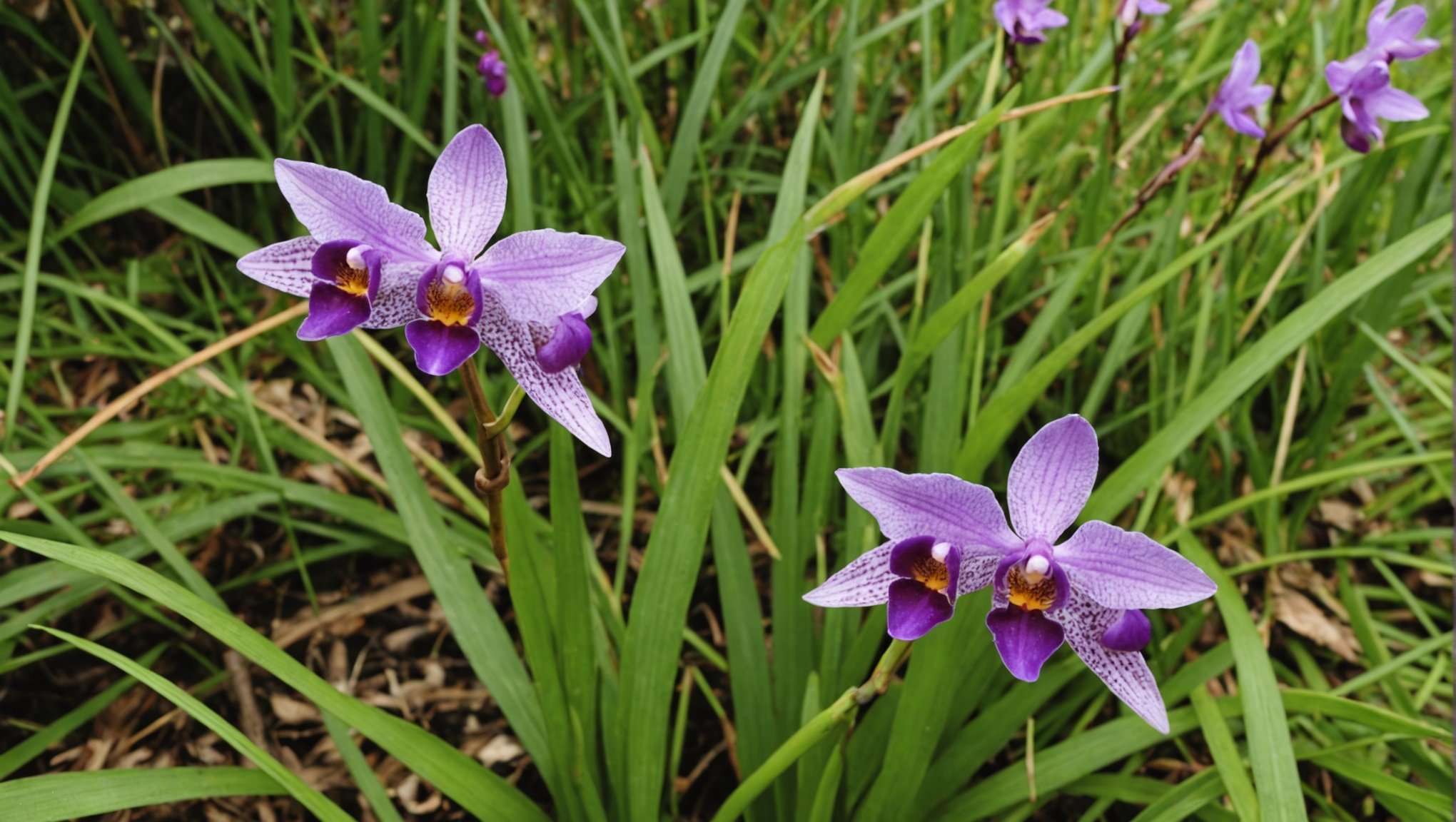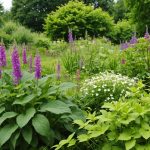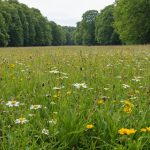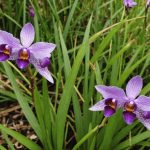Local native orchids are not just beautiful; they are vital components of the UK’s biodiversity. Sadly, many species face threats from habitat loss and climate change. UK residents hold the power to make a difference. By engaging in conservation efforts, you can help protect these delicate plants and ensure their survival for future generations. Discover effective strategies to support local orchid species and cultivate a thriving environment that celebrates this unique flora. Your actions can create a ripple effect, benefiting ecosystems and communities alike.
Understanding Native Orchids in the UK
The UK’s native orchids are a fascinating component of its rich flora, boasting around 50 species that contribute significantly to the country’s biodiversity. These orchids, ranging from the common spotted orchid to the rare lady’s slipper, are integral to local ecosystems. They provide essential resources for pollinators and play a role in maintaining ecological balance.
A découvrir également : Reviving UK Meadows: Unlocking the Secrets to Boosting Insect Biodiversity Through Rewilding
Native orchids have adapted to various habitats across the UK, including woodlands, meadows, and wetlands. Their presence indicates healthy ecosystems, as they often rely on specific fungi and pollinators to thrive. This symbiotic relationship underscores their importance within the UK flora.
However, the current status of native orchid populations is concerning. Habitat loss, climate change, and human activities pose significant threats. Many species are experiencing declines, with some, like the lady’s slipper, requiring conservation efforts to prevent extinction. Trends indicate a need for increased protection and public awareness to safeguard these delicate plants.
Sujet a lire : Protecting Marine Turtles: Innovative Strategies for UK Coastal Developments to Preserve Nesting Sites
Efforts to conserve native orchids include habitat restoration and legal protections. By understanding and supporting these initiatives, we can ensure the survival of the UK’s native orchids, preserving their beauty and ecological value for future generations.
The Importance of Conservation
Understanding the importance of conservation is crucial for maintaining the health of ecosystems and preserving native species. Native orchids, for instance, are vital to the UK’s biodiversity. They play a significant role in supporting various pollinators and maintaining ecological balance. These orchids are not just beautiful; they are indicators of healthy ecosystems, dependent on specific fungi and pollinators.
Conserving native orchids offers both economic and ecological benefits. Healthy ecosystems support agriculture, tourism, and recreation, contributing to the economy. Additionally, preserving native flora helps maintain soil health, water quality, and carbon storage. By protecting orchids, we also safeguard these broader environmental services.
However, native orchids face numerous threats. Habitat loss due to urbanisation and agriculture, climate change, and human activities such as illegal picking are significant challenges. These factors contribute to the decline of orchid populations, threatening their survival.
Efforts to conserve these plants focus on habitat restoration and legal protections. By understanding the conservation importance and supporting initiatives, we can help preserve the UK’s native orchids. This ensures that future generations can enjoy their beauty and the ecological benefits they provide.
Local Volunteer Opportunities
Engaging in volunteer programs for orchid conservation is a rewarding way to contribute to the preservation of the UK’s native orchids. Various organizations across the UK offer opportunities for community involvement in conservation projects. These initiatives often involve habitat restoration, monitoring orchid populations, and educational outreach.
To get involved, potential volunteers can start by contacting local environmental groups or nature reserves. Many organizations welcome volunteers of all backgrounds and provide necessary training. Participating in these projects not only aids in conservation efforts but also fosters personal growth. Volunteers gain valuable skills, such as ecological monitoring and public engagement, while connecting with like-minded individuals.
The benefits of volunteering extend beyond personal development. Community involvement in conservation projects strengthens local ties and raises awareness about environmental issues. By participating in these initiatives, volunteers play a crucial role in promoting sustainable practices and preserving biodiversity.
Volunteering offers a unique opportunity to make a tangible impact on local ecosystems. Whether through hands-on conservation work or educational activities, volunteers contribute to the protection of native orchids and the overall health of the environment. Engaging with these projects is a meaningful way to support both personal and community growth.
Planting Guidelines for Home Gardens
Embarking on home gardening with native orchids can be a rewarding venture. To ensure success, it’s crucial to follow best practices tailored to these delicate plants. Native orchids require specific conditions to thrive, so understanding these needs is essential.
Planting native orchids begins with selecting the right species. For UK gardens, consider species like the common spotted orchid or the bee orchid. These are well-suited to local climates and soil conditions. When planting, choose a location that mimics their natural habitats, such as partially shaded areas with well-drained soil.
Creating a conducive environment involves more than just location. Sustainable practices are key to maintaining healthy orchids. Avoid using chemical fertilizers, which can harm the delicate balance orchids need. Instead, opt for organic compost and mulch to enrich the soil naturally.
Watering is another vital aspect. Native orchids generally prefer moisture, but overwatering can be detrimental. Ensure the soil remains damp but not waterlogged. Regular monitoring of the soil’s moisture level can help prevent issues.
By incorporating these practices, you can cultivate a thriving orchid garden. This not only enhances your home garden’s beauty but also supports local biodiversity.
Community Initiatives Supporting Conservation
Community programs play a pivotal role in orchid conservation, offering a grassroots approach to preserving these delicate plants. Across the UK, various conservation initiatives have emerged, driven by local action and community involvement. These projects not only protect native orchids but also foster environmental awareness and stewardship.
One notable example is the Wild Orchids Project in Sussex, where volunteers engage in habitat restoration and monitoring efforts. This community-led initiative has successfully increased local orchid populations by restoring grasslands and educating the public about the importance of orchids in ecosystems.
To start or join local conservation groups, interested individuals can reach out to environmental organisations or local councils. Many groups welcome new members, offering opportunities to participate in hands-on activities like planting, monitoring, and educational outreach. These efforts are crucial in building a network of committed individuals dedicated to orchid preservation.
The impact of community initiatives extends beyond immediate conservation goals. By promoting sustainable practices and enhancing local biodiversity, these programs contribute to the long-term health of ecosystems. Community involvement in conservation initiatives not only helps preserve native orchids but also strengthens community ties and fosters a sense of shared responsibility for the environment.
Tools and Resources for Conservation Efforts
Equipping yourself with the right conservation tools and resources is vital for effective orchid conservation. Whether you’re a seasoned conservationist or a beginner, having access to the right tools can significantly enhance your efforts.
For hands-on orchid care, consider using specialised gardening tools such as trowels designed for delicate plants and moisture meters to ensure optimal soil conditions. These tools help maintain the health of orchids by providing precise care tailored to their unique needs.
When it comes to educational materials, numerous online resources offer comprehensive information about native orchids. Websites and online courses provide valuable insights into orchid biology, habitat requirements, and conservation techniques. These resources empower individuals to make informed decisions and implement best practices in their conservation efforts.
Additionally, technology plays a crucial role in modern conservation. Apps and platforms designed for tracking and reporting orchid sightings allow enthusiasts to contribute to citizen science projects. These tools not only aid in monitoring orchid populations but also facilitate community engagement by connecting individuals with similar interests. By utilising these gardening resources and digital platforms, you can actively participate in preserving the UK’s native orchids and promoting biodiversity.
Educational Insights on Native Orchids
Understanding the biology and ecology of native orchids is crucial for their conservation. These plants exhibit unique adaptations, such as symbiotic relationships with fungi, which are essential for their growth and survival. This intricate dependency highlights their ecological significance and the delicate balance required to maintain their habitats.
Education plays a pivotal role in raising awareness about orchid conservation. By equipping individuals with knowledge about orchid biology, we can foster a deeper appreciation for these plants and the ecosystems they inhabit. Ecological education empowers communities to engage in informed conservation efforts, ensuring the protection of native orchids for future generations.
Numerous educational resources are available for those interested in learning more. Workshops and courses offer hands-on experiences, allowing participants to explore orchid biology and conservation strategies. These programs often cover topics such as habitat restoration, species identification, and sustainable gardening practices. Engaging in these educational opportunities not only enriches personal knowledge but also contributes to broader conservation initiatives.
By participating in these educational activities, individuals can become advocates for orchid conservation, promoting sustainable practices and enhancing biodiversity awareness within their communities.
Collaborating with Conservation Organizations
Collaborating with conservation organizations is essential for enhancing the effectiveness of orchid conservation efforts in the UK. Key organizations, such as the Royal Society for the Protection of Birds (RSPB) and the Wildlife Trusts, play a pivotal role in protecting native orchids through habitat restoration and public education.
To collaborate effectively, individuals and groups can reach out to these organizations to explore partnerships. This collaboration can include volunteering, participating in joint projects, or sharing data and resources. By working together, conservationists can amplify their impact and ensure that efforts are well-coordinated and sustainable.
Funding opportunities are crucial for supporting these initiatives. Organizations often offer grants and financial support for conservation projects. For example, the Heritage Lottery Fund provides funding for projects that aim to protect and promote the UK’s natural heritage. Applying for these grants requires a well-structured proposal that outlines the project’s objectives, methods, and expected outcomes.
Engaging with conservation organizations not only provides access to valuable resources and expertise but also strengthens the network of individuals dedicated to preserving the UK’s native orchids. Through these collaborations, we can ensure a more robust and effective approach to conservation.
Success Stories in Orchid Conservation
Exploring conservation success stories offers valuable insights into effective strategies for preserving native orchids. In the UK, several case studies highlight how targeted efforts can lead to significant improvements in orchid populations.
One remarkable example is the Lady’s Slipper Orchid Project. Once on the brink of extinction, this orchid has seen a resurgence due to dedicated conservation efforts. By focusing on habitat restoration and protecting existing populations, conservationists have successfully increased the number of these orchids in the wild. This project underscores the importance of tailored strategies in achieving conservation goals.
Lessons learned from such initiatives emphasize the need for community engagement and collaboration with local stakeholders. Involving local communities not only raises awareness but also fosters a sense of ownership and responsibility towards conservation efforts. This approach has proven effective in ensuring long-term success.
Strategies from these success stories can be replicated in other regions facing similar challenges. Key practices include habitat management, legal protections, and public education. By adopting these best practices, other conservation projects can enhance their effectiveness and contribute to the global effort of preserving biodiversity.
The Role of Research in Conservation
Research plays a pivotal role in conservation efforts, particularly in understanding the intricate ecology of native orchids. Scientific studies provide insights into the complex relationships between orchids, their habitats, and the species they interact with. This knowledge is essential for developing effective conservation strategies.
Current research projects focus on various aspects of orchid conservation, including habitat requirements, pollination mechanisms, and genetic diversity. These studies are crucial for identifying the specific needs of different orchid species and the threats they face. For example, research into the symbiotic relationships between orchids and fungi has revealed critical information about their growth and survival.
The findings from these scientific studies can significantly inform community action and policy-making. By understanding the ecological needs of orchids, conservationists can implement targeted habitat restoration projects and develop policies that protect these delicate plants. Moreover, research outcomes can guide public education initiatives, raising awareness about the importance of preserving native orchids.
Incorporating research into conservation efforts ensures that actions are evidence-based and effective. By staying informed about the latest scientific findings, communities and policymakers can make informed decisions that support the long-term survival of the UK’s native orchids.
















